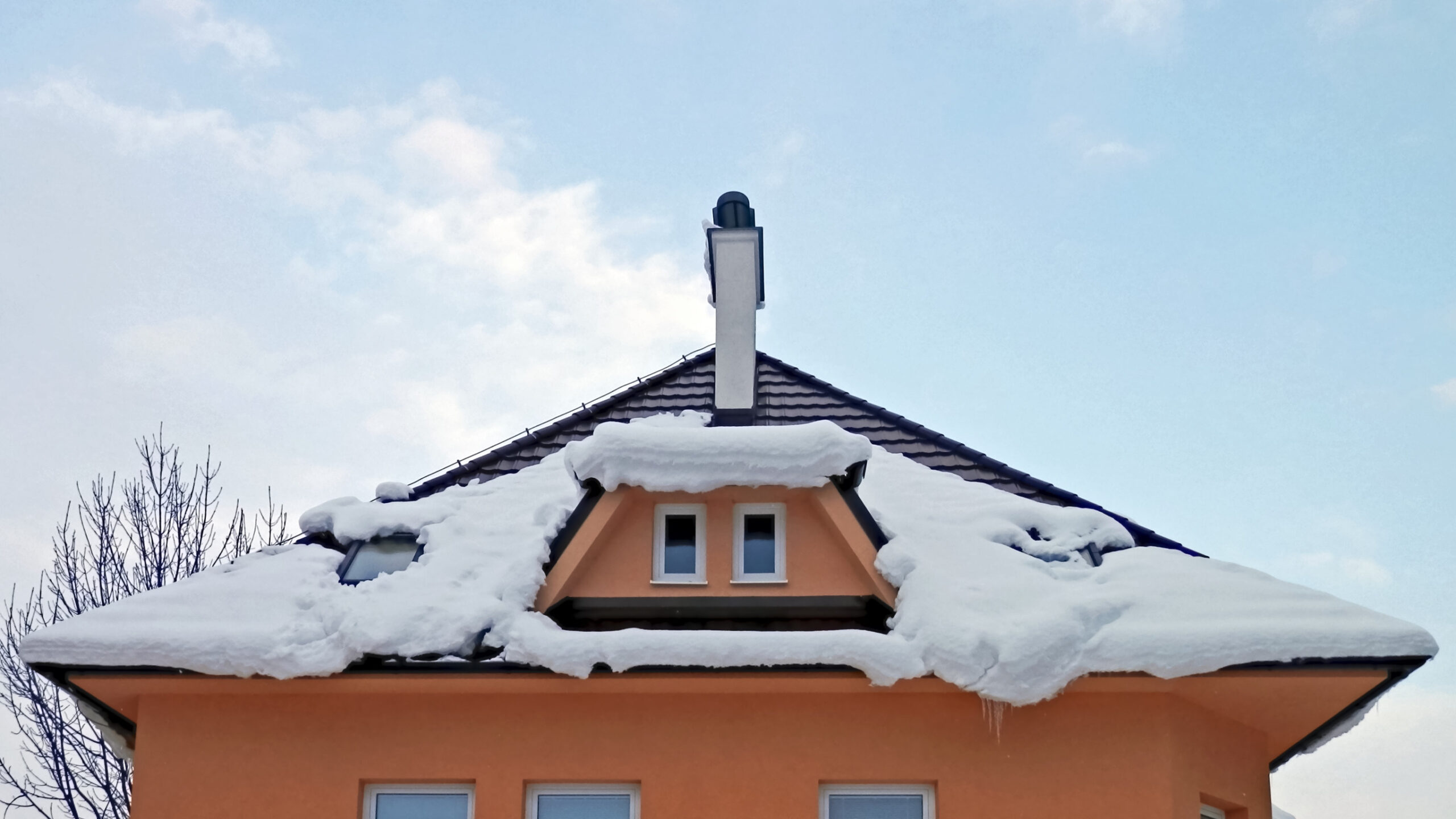
Living in Minnesota means embracing every season — and your roof bears the brunt of each one. Heavy snow loads, ice dams, strong winds, spring rainstorms, and summer hail all put stress on shingles, flashing, and gutters.
Proactive maintenance doesn’t just keep your roof looking neat; it protects against leaks, mold, and costly structural repairs. Most importantly, it helps you get the full lifespan out of your roofing materials — whether they’re new architectural shingles or a decades-old system due for replacement soon.
One of the biggest threats to Minnesota roofs is ice dams — those ridges of ice that trap melting snow on your roof, causing leaks that ruin insulation and interior ceilings.
Winter roof maintenance tips:
✔ Check attic insulation: Proper insulation keeps warm air from escaping, which reduces snow melt and prevents ice dam formation.
✔ Ventilation matters: Good airflow in the attic keeps roof temperatures consistent. Ridge vents, soffit vents, or gable vents all play a role.
✔ Safely remove excess snow: After a big snowfall, use a roof rake (from the ground) to clear heavy drifts, especially on low-slope sections. Never chip away at ice dams yourself — improper removal can damage shingles.
✔ Inspect after storms: Heavy snow and ice can bend gutters, pull down flashing, or break seals around chimneys.
Winter weather information.
When the snow melts, your roof emerges from its winter coat — sometimes worse for wear.
Spring maintenance checklist:
✔ Look for shingle damage: Scan for missing, cracked, or curling shingles. These let water seep into your roof deck.
✔ Clean out gutters: Clogged gutters overflow, sending water down siding and into your foundation. Minnesota’s freeze-thaw cycles make gutter maintenance especially important.
✔ Check flashing: The metal strips around chimneys, vents, and skylights can lift or rust. Damaged flashing is a common source of hidden leaks.
✔ Schedule an inspection: If you spot trouble or your roof is 15+ years old, a professional inspection can catch issues early.
Summer brings thunderstorms and the risk of hail damage. Hailstones can knock off shingle granules, dent soft metal flashing, and loosen seals.
Summer roof care tips:
✔ Trim back trees: Branches that hang too close to the roof can scrape shingles or break during storms.
✔ Check attic ventilation: Proper venting keeps attics cooler, reducing expansion and contraction that wears out roofing materials.
✔ Look for moss and algae: Warm, humid conditions can cause unsightly growth that holds moisture against shingles.
✔ Know the signs of hail damage: After a storm, look for shingle pockmarks, dented gutters, or piles of granules in downspouts.
Before the first freeze, take time to button up your roof and gutters:
✔ Clean gutters again: Falling leaves clog gutters fast, leading to ice dams once temperatures drop.
✔ Inspect attic insulation: Adding or replacing insulation helps prevent heat loss that fuels ice dam formation.
✔ Check for animal entry points: Critters like squirrels and raccoons often seek warm shelter in attics. Seal gaps and repair soffits.
✔ Test roof drainage: Downspouts should direct water at least 4–6 feet away from your foundation.
Some roof care tasks are best done seasonally, but these year-round habits can save you big headaches:
Spot-check after big storms: High winds can pull up shingles. Hail can bruise or break them.
Look in your attic: If you see signs of leaks — damp insulation, moldy spots, or water stains — act fast.
Document repairs and inspections: Keep photos and records, especially if you ever need to file an insurance claim.
Not all roof problems are visible from the yard. Local companies like A&M Roofing understand Minnesota’s weather patterns and how they affect your specific roof style and age.
It’s smart to get a professional inspection:
Every year if your roof is older
After a major hail or wind event
Before buying or selling a house
When you spot warning signs like sagging, leaks, or curling shingles
Certified pros can safely get on the roof, check the underlying decking, and help you decide whether a repair or replacement makes more sense long-term.
A&M Roofing, based in the Brainerd Lakes area and Twin Cities Metro, knows exactly what Minnesota winters and storms do to roofs. As a family-owned GAF Certified™ contractor, they use materials designed to withstand local conditions and install them to meet or exceed warranty standards.
A local crew can also handle insurance claims for storm damage. Unlike out-of-state “storm chasers,” a trusted neighborhood roofer is around for any future warranty work or maintenance advice.
Regular maintenance can protect your insurance coverage, too. Many policies require homeowners to demonstrate that damage was sudden (like a storm) and not due to neglect.
Keep clear records of inspections, repairs, and any claims. This paperwork supports your case if you need to file a claim for wind or hail damage — something A&M Roofing helps homeowners navigate every year.
✔ Gutter Guards: Keep leaves and debris out, so water flows freely year-round.
✔ Ridge Vents: Improve airflow and reduce heat buildup in summer.
✔ Ice & Water Shield: If your roof is due for replacement, installing a waterproof barrier along eaves and valleys adds extra protection against leaks.
✔ Impact-Resistant Shingles: Some shingles stand up better to hail and may even earn insurance discounts.
Inspect the roof every spring and fall
Keep gutters clear, especially before winter
Look for signs of storm damage after severe weather
Address leaks or stains immediately
Use licensed, certified contractors for repairs
Keep documentation of all inspections and work
A bit of preventative care each season can add years to your roof’s lifespan — and protect your home’s value.
For questions about routine maintenance or help spotting storm damage before it worsens, contact A&M Roofing today — your local roof care resource.